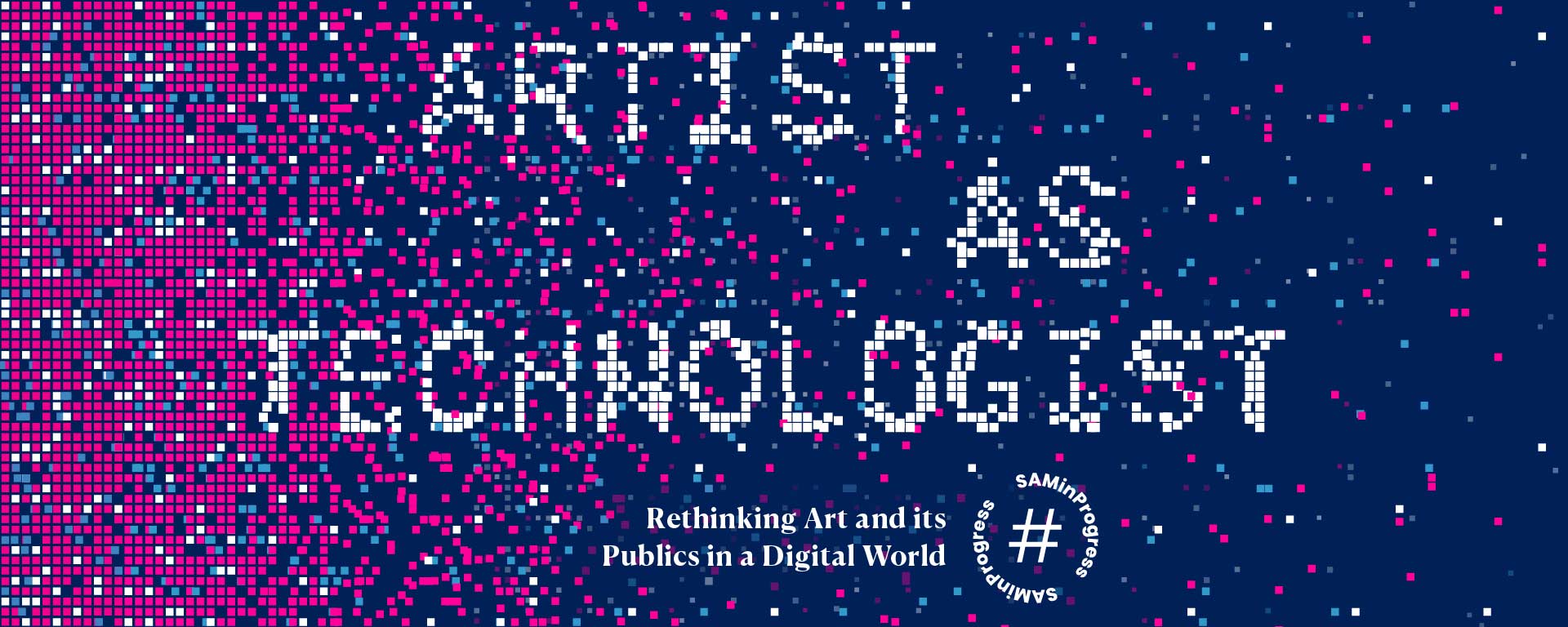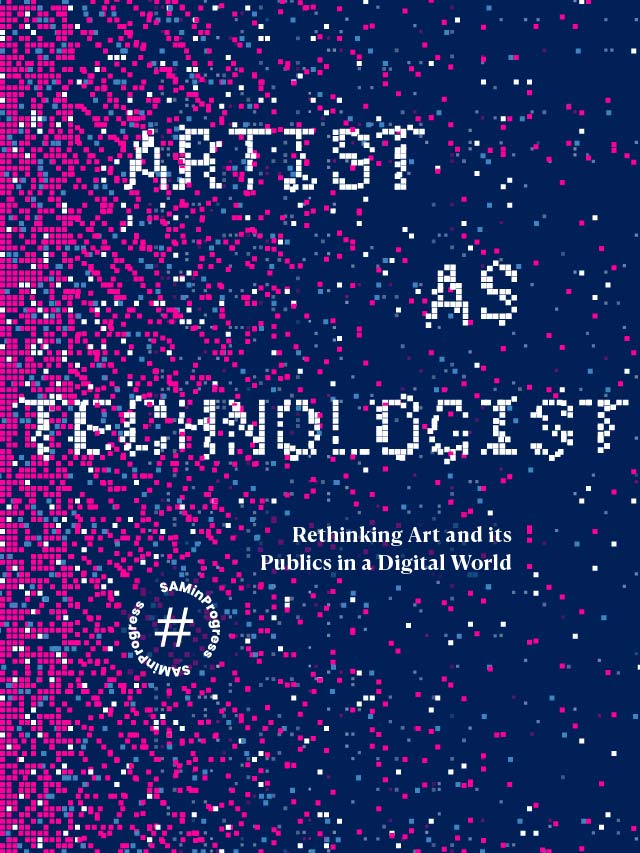The Artist as Technologist: Rethinking Art and its Publics in a Digital World
From online exhibitions to non-fungible tokens (NFTs), the art world has not been spared from the increasing digitalisation of our everyday lives. Advance technologies have led to decentralisation and even re-ordered how the public participates and accesses art. Amidst these shifts, what is the role of the art museum and how might it look at collecting, curating and exhibiting art during present times?
We explore some of these issues in our latest exhibition, 'Wikicliki: Collecting Habits on an Earth Filled with Smartphones'. A collaboration between six artists and curators, the exhibition adopts its title 'Wikicliki', from artist Debbie Ding’s constantly evolving digital artwork, http://dbbd.sg/wiki. Debbie and curator Shabbir Hussain Mustafa tell us more about the exhibition as well as how they see the production, consumption and circulation of art changing in a digital world.
Why is SAM mounting an exhibition about how a contemporary art museum collects its works now?
Shabbir Hussain Mustafa (SHM): The presentation of recent acquisitions by Heman Chong and Charles Lim Yi Yong alongside works by Debbie Ding, Chua Chye Teck, Amanda Heng and bani haykal constructs an atmosphere to think about how artists are radically re-working formats and how contemporary art institutions can act in relation to these burgeoning concerns. For instance, many of the works are ‘dematerialised’ – that is they do not have a fixed form or even a physical presence but continue to expand and grow with each presentation. How does the institution collect, conserve and re-present such works? How does it act as a bridge between its constituents and artists? What happens to the traditional space of the museum gallery?
The exhibition is named after Debbie’s artwork Wikicliki, a Wikipedia-style collection of her notes and works she has maintained since 2008. How did this connection happen and how might it represent new modes of collecting, creating and presenting art?
Debbie Ding (DD): I have been producing works in many different formats over the years (from the more conventional drawings and prints, to using pulsed laser holography, interactive installations, and video games) and I have always been thinking more about production methods and techniques as well as visual metaphors for the works. I have not always talked about when a work becomes resolved, or why it is finally considered resolved or completed. Especially so when some of the works seem to evolve every time as they are being presented to a physical audience. The purpose of me making work is for the public to see. I do not make work with the explicit intention to sell it or have people collect it.
To increase public access to the works shown in the exhibition, I have created versions of the work online so that those who are hesitant to touch my books in the gallery can read them on the website http://dbbd.sg/rules/ instead. This is easy for me to do technically because all my work is essentially already online in my website DBBD.SG which I have built (my day job is relating to UX/UI/Web, so I build everything by myself). But then, people ask what is the value of seeing the work in person in the exhibition then? The whole point of why the physical gallery is so important is that the physical experience of encountering a space for art is so different from seeing some words or images on a screen. In a physical space, there is the potential for unexpected juxtapositions and novel connections. It is a bit like the magic of going to a physical library and seeing all the different book titles nestled up against each other, where you could go looking for a certain title and end up finding something next to it which is even more compelling. I suppose I also try to achieve that with the design of my own Wiki and my website, playing around with how the information is presented, organised, and dynamically reorganised – trying to allow for these unexpected juxtapositions.
SHM: In my curatorial work, I often engage artists in conversations that stretch over several years. I have followed Debbie’s practice in this manner. The hope is to think about how Debbie’s projects relate to broader issues being discussed in contemporary art but also how they intercross with contemporary and ubiquitous technologies. The conversation with Debbie has ranged across multiple fields: from the representation of diverse perspectives in art institutions and rethinking what the phrase ‘community’ means in an era of social media excess, to engaging with emerging topics on advance technologies and the constantly evolving face of late capitalism. These conversations would last several hours and were not necessarily guided by a particular agenda. The hope was to understand Debbie’s practice as it has evolved over the years, from the early ‘analogue’ works to the more recent digital manifestations. How can the curator engage with these complexities as we explore the possibility of featuring the works in an exhibition space?
In Debbie’s recent works, such as the Legend of Debbie (2021) that maps 10 years of her practice in a virtual game environment, I see the building blocks for a dream-like practice that attempts to build a new public that can access art differently.
One of the methods to address these issues is the “Curatorium”, in which SAM curators developed the exhibition in collaboration with artists. Tell us more about this process and the experience.
SHM: The exhibition has been developed through a Curatorium of six artist-curator pairings. Working in close collaboration with the artists, the curators have adapted these artworks for Wikicliki by adopting unique approaches to presenting and framing these artworks. While most of the works have been exhibited before in different exhibitions, this iteration traces the artists’ changing modes of creating and presenting work in relation to the traditional infrastructure of the museum’s gallery space. For instance, Heman Chong’s Everything (Wikipedia) (2019), grapples with the overwhelming and seemingly infinite amount of information available at our fingertips today. A performer recites Wikipedia’s “Page of the Day” from a mobile phone, then decides in real-time which links to follow and continues to read the encyclopaedic website aloud. This action is repeated for a pre-determined number of hours. Chong’s work does not necessarily require a traditional gallery space for it to be mobilised; opening up a space for critical dialogue between artwork, artist and museum.
DD: The dialogue we have had between artists and curators has been very fruitful in shaping the logic behind how the works are presented. These sorts of conversations and dialogues are also reflected in the games I am working on at the moment. Since there are many more limitations on face-to-face events, talks, or even how a show can be presented to an audience during Covid times, I have found myself working more and more in virtual game environments. The Legend of Debbie (2021) tries to imagine the most complete museum of my past archived works, described by a slightly inconsistent narrator who is like an exaggerated version of myself.
New technologies for image circulation are one of the driving forces for exploring new modes of the curatorial. How has the rise of the digital impacted on the practice and audience’s experience of art?
DD: I am often asked why I choose to work with “digital” mediums, but it is simply because the “digital” is part of my everyday life and therefore it is a part of my art making. Since it is the reality which surrounds us, I would imagine artists engaging deeply with it and wanting to understand and be playful with the technologies they interact with on a daily basis.
SHM: As the medium and format of artworks become increasingly varied and de-materialised, there is a need to consider the constituting role of the museum in new modes of collecting, creating and presenting art. There are artists today who do not necessarily need the traditional infrastructures or the museological context of the museum to operate. The challenge is already emerging from artists; curators and institutions will have to find ways to engage with this reflexively and in a productive manner.
How might the recent rise of non-fungible tokens (NFTs) impact on the production and consumption of art?
DD: I am not sure if the general public is actually truly consuming or appreciating 'crypto art'. At the moment, it does seem like hype to me. But as an artist working with the digital, I am keen on the functional aspects of being able to create smart contracts on the blockchain. Personally, I hope that the interest in NFTs lead people to understand how crypto or how the blockchain works and that it spurs artists to think of more innovative ways of producing and presenting digital artworks. However, the format through which NFTs are currently minted and “sold” to audiences seem quite traditional and similar to online marketplaces. This will not magically produce new audiences or collectors overnight either. One still has to rely on building relationships with real people!
Step outside the screen and see the artworks by Debbie and others in-person at the National Gallery Singapore until 11 July 2021. There are also upcoming talks between the artists and curators. For more information, visit https://www.singaporeartmuseum.sg/art-events/exhibitions/wikicliki.


